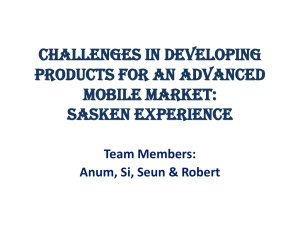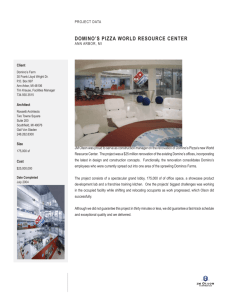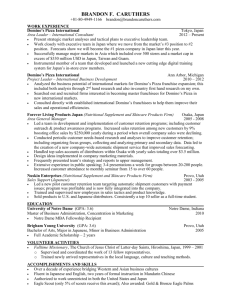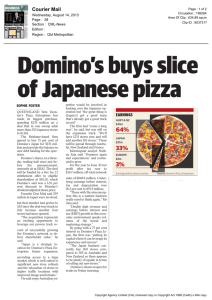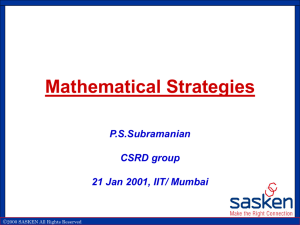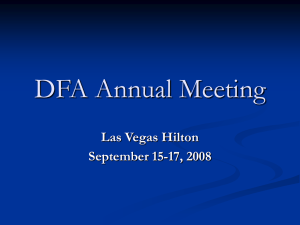Group Comparison
advertisement
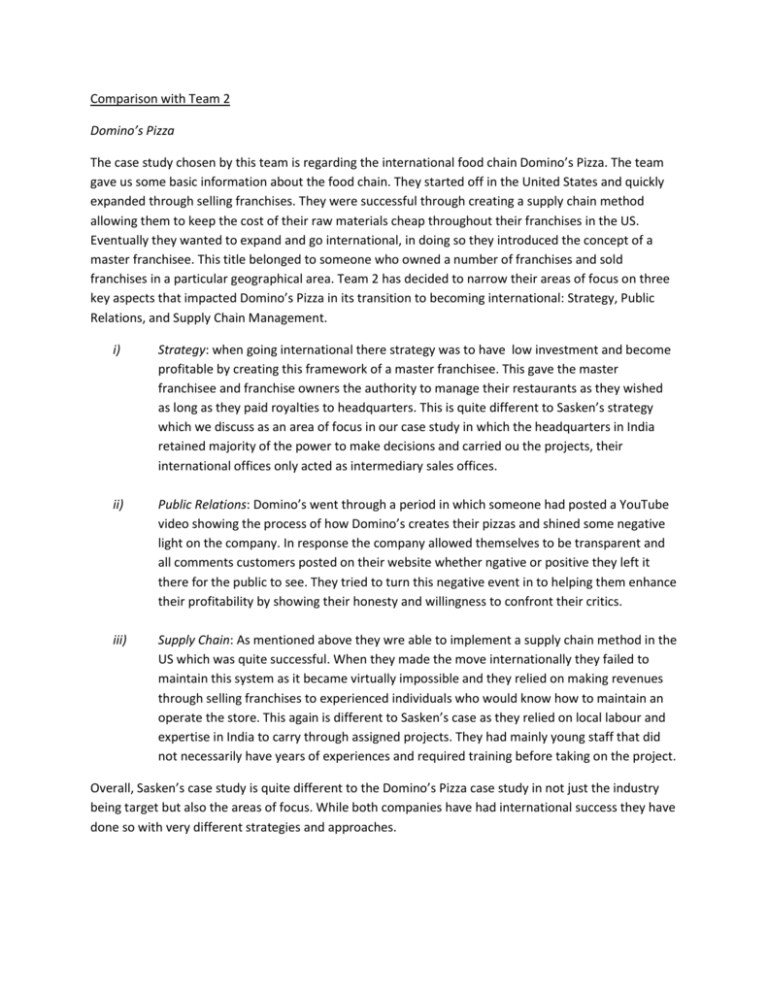
Comparison with Team 2 Domino’s Pizza The case study chosen by this team is regarding the international food chain Domino’s Pizza. The team gave us some basic information about the food chain. They started off in the United States and quickly expanded through selling franchises. They were successful through creating a supply chain method allowing them to keep the cost of their raw materials cheap throughout their franchises in the US. Eventually they wanted to expand and go international, in doing so they introduced the concept of a master franchisee. This title belonged to someone who owned a number of franchises and sold franchises in a particular geographical area. Team 2 has decided to narrow their areas of focus on three key aspects that impacted Domino’s Pizza in its transition to becoming international: Strategy, Public Relations, and Supply Chain Management. i) Strategy: when going international there strategy was to have low investment and become profitable by creating this framework of a master franchisee. This gave the master franchisee and franchise owners the authority to manage their restaurants as they wished as long as they paid royalties to headquarters. This is quite different to Sasken’s strategy which we discuss as an area of focus in our case study in which the headquarters in India retained majority of the power to make decisions and carried ou the projects, their international offices only acted as intermediary sales offices. ii) Public Relations: Domino’s went through a period in which someone had posted a YouTube video showing the process of how Domino’s creates their pizzas and shined some negative light on the company. In response the company allowed themselves to be transparent and all comments customers posted on their website whether ngative or positive they left it there for the public to see. They tried to turn this negative event in to helping them enhance their profitability by showing their honesty and willingness to confront their critics. iii) Supply Chain: As mentioned above they wre able to implement a supply chain method in the US which was quite successful. When they made the move internationally they failed to maintain this system as it became virtually impossible and they relied on making revenues through selling franchises to experienced individuals who would know how to maintain an operate the store. This again is different to Sasken’s case as they relied on local labour and expertise in India to carry through assigned projects. They had mainly young staff that did not necessarily have years of experiences and required training before taking on the project. Overall, Sasken’s case study is quite different to the Domino’s Pizza case study in not just the industry being target but also the areas of focus. While both companies have had international success they have done so with very different strategies and approaches. Comparison with Team 5 Levendary Café Team 5 also looked at a business targeting the food industry and had started off in the United States with the intention to expand to China. When they were able to make the transition the person in charge of the development of the stores in China had adopted a different strategy and approach to that which was implemented in the United States. The conflict presented in their case study is between the new CEO of Levendary Café and the individual appointed to developing the cafes in China. The team decided to focus on: cultural differences, stakeholder management and communication barriers. i. Culture Differences: The team is looking at the comparison between the Chinese culture and the American culture. Some differences they have noted includes the fact that in China people go to eat at a restaurant and quickly leave they don’t sit around whereas in the States going to a restaurant is a socializing experience. This is the reason the development in China of the café’s is structured differently to those in the USA. This aspect is similar to what we are also disucssin with regards to the Sasken case study. We are comparing the Japanese culture to the Indian culture in how they do business Similar to the Levendary Café situation there seems to be a missing link between the two cultures that is not being understood by headquarters completely who want to continue to enforce their own rules and policies. ii. Communication: The second aspect the team is looking into is the barriers that exist with communication. They note that bridging between the cultures cannot be done because the headquarters do not do anything to support the business structure in China. Again this is another aspect we are looking at in the case of Sasken. There seems to be some miscommunication between the Japanese vendor and the headquarters in India. Since they don’t have any key representative from the project team in India located in Japan many communication issues arise delaying the project and making it a challenge to complete. iii. Stakeholder Management: their team discusses how in USA the structure is more of a hierarchy so problems are dealt with in a top down fashion. Inc omparsion to the States in China the structure is formed in a way that they area ble to respond to their stakeholders more immediately. They act upon situations as they appear rather than putting it off until later or waiting for someone else to deal with it. Again we can say Sasken deals with their stakeholders in a similar fashion, it seems as if the local sales offices do not deal with stakeholders directly but send their requests, complaints, or failed products to the headquarters to handle. After meeting with Team 5 we felt there was a lot in common in the overall picture of both of our case studies. Again although they are targtting completely different industries the overall strategies applied are similar and result into problems such as communication barriers and cultural differences.
